September 30, 2016
Summer in Minnesota is lovely. The Idiots relish their time with family and friends and the beauties of the gardens they created through 38 years on Harbor Lane.
But September sends signals of the brutal winter to come. In their youths the Idiots subscribed to the “Minnesota winters build character” theory – a corollary of “What doesn’t kill you makes you stronger”. Now they view “Little House on the Tundra” weather for what it is – potentially lethal. Every turning leaf tells them it’s time to get out.

The Idiots put a firm departure date on the calendar – September 25. Regular readers will not be surprised that The Beast didn’t roll out of the driveway until September 30. No problem. Getting a fresh start and following their well-established route, it isn’t difficult to do 550 miles or more in a day… 1650 miles to Green Valley, Arizona in three days.
But the Idiots dawdle. It’s just a fact of life. Their early start evaporated as they thought of one or two more things to pack to take to the new house in Arizona… one more friend to see… one more detail to clear up. And coffee… no point in taking off without having morning coffee. And email… and Facebook…
And it wouldn’t be fair to say the Idiots have a poor senses of direction… but it is fair to say they often don’t use it. Idiot He steered them down the obvious route toward – 212 to 41 to 169 to 60 – four-lane divided highways ultimately connecting to Interstate 90 near the South Dakota border.
As they exited the Minneapolis suburbs on Highway 212, Idiot He started to reminisce about the trip west his family took in 1959. The interstate highway system did not yet dominate the American landscape, so Chambers of Commerce attempted to capture pieces of the rapidly-growing automobile travel tourist dollars by advertising various highways as the “best” roads to cross the country.
The Lincoln Highway and Route 66 are famous, but for folks in Minnesota, Highway 212 – “The Yellowstone Trail” – was the route to adventure highlighted on their AAA Trip-Tics. Touted as “The shortest route to Yellowstone”, it carried people down a seemingly-endless series of small town Main Streets across Minnesota, South Dakota, and Wyoming.
Efficiency gave in to nostalgia and they drove 212 all the way to South Dakota. They marveled at the small glories of a sunny day in late fall. Harvest was in full swing, with combines running day and night, filling silos and bins and trucks and trains with millions of bushels of corn, beans, and wheat. The lives and livelihoods of billions of people hinge on the agricultural harvest of the American heartland, but most of them have never witnessed it. It is a spectacle of fecundity.
After something like 300 miles, the Idiots were ready for a night’s rest. A little mom-and-pop campground in Plankington, South Dakota provided them a flat spot and electricity. And there’s something you don’t see every day – a giant hay bale in the campground. No use letting all that grass go to waste!
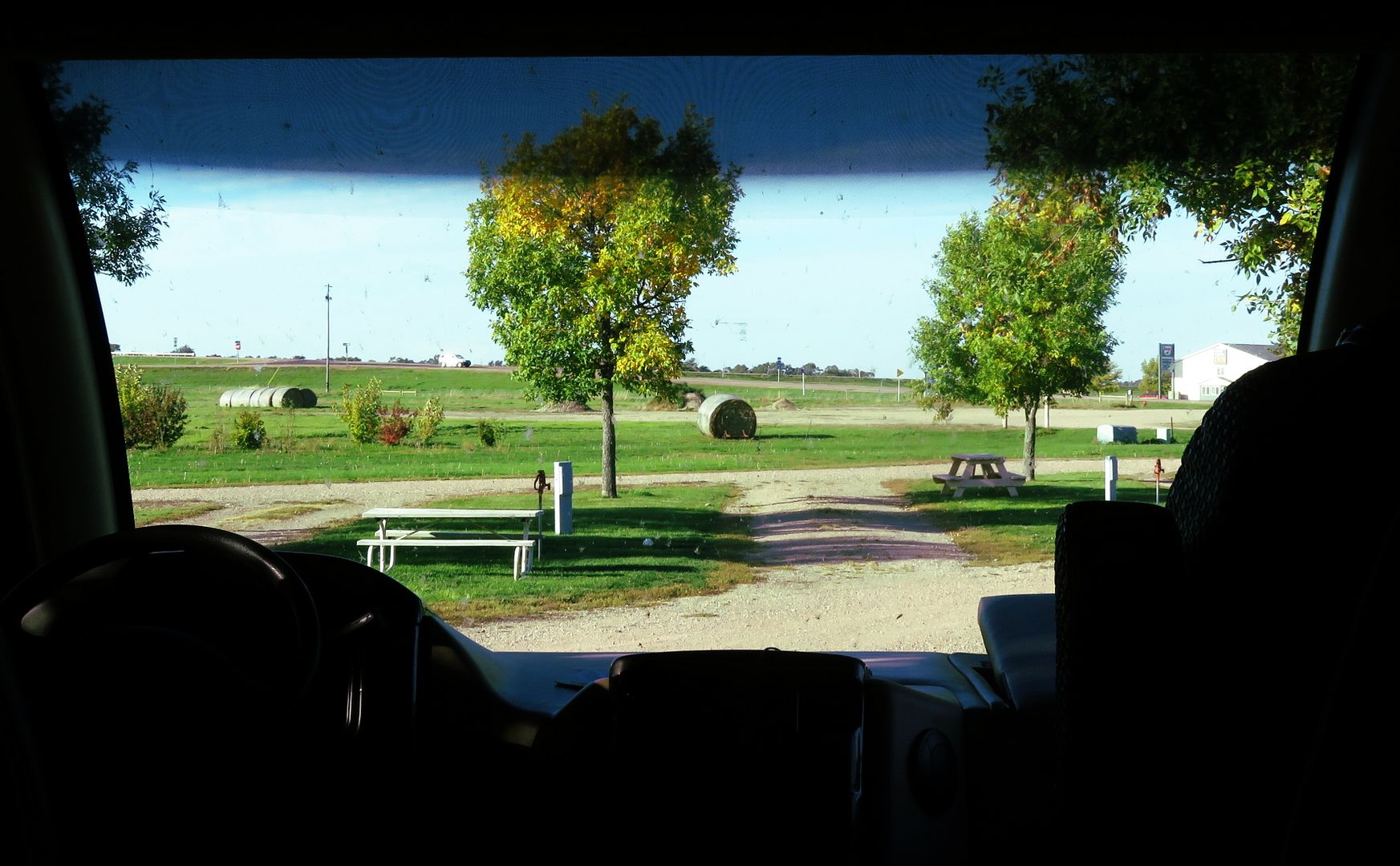
The next morning they crossed the Missouri river at Chamberlain, SD. Lewis and Clark supposedly stopped at this same spot, and the view today is barely changed… except for the dam and huge reservoir and railroad and interstate bridges and thousands of vehicles rushing past… and the giant fiberglass bison butt…
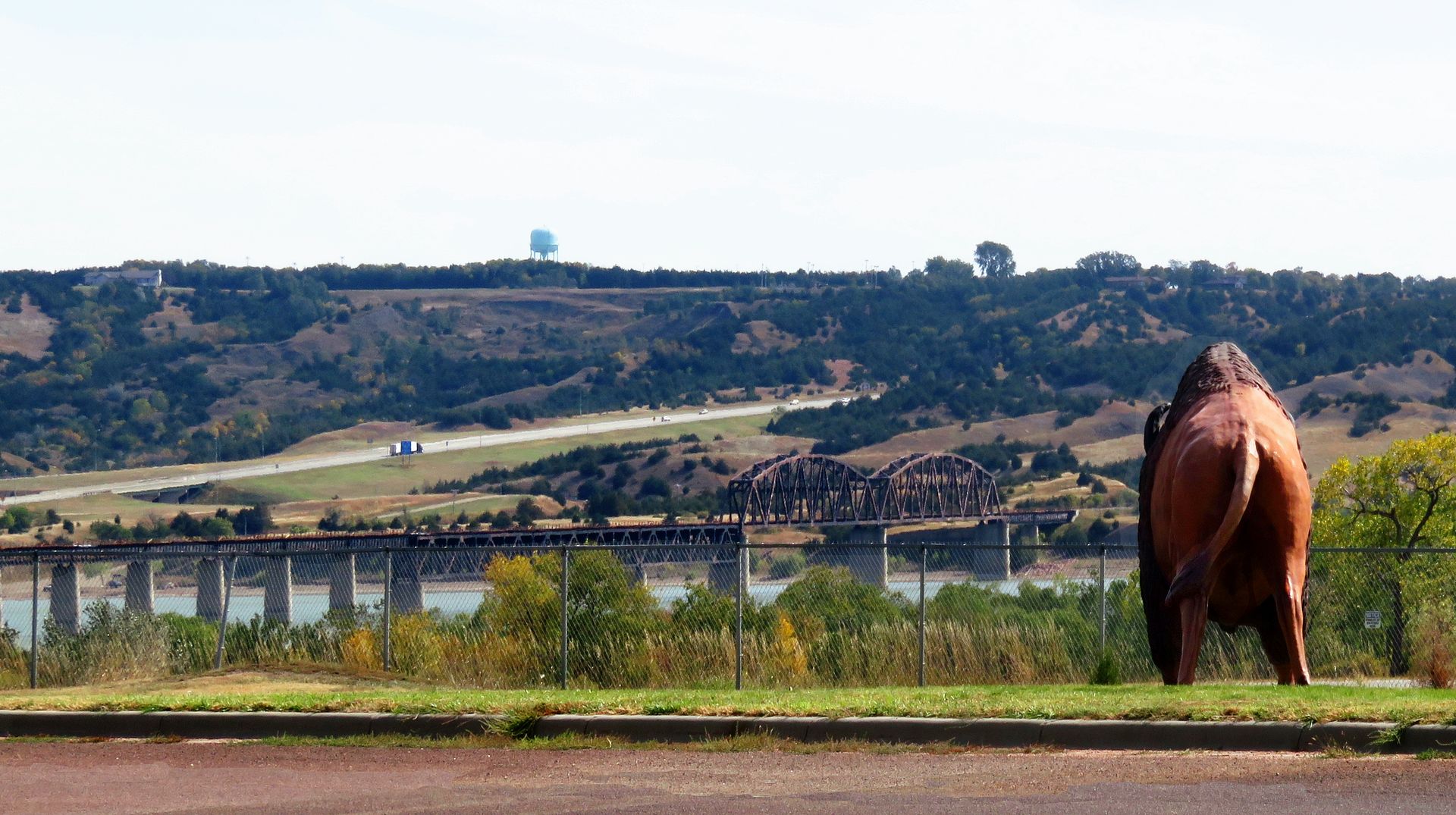
-----------------------------------------------------------------------------
The Idiots are going to get quite serious for the rest of this episode. They promise pretty pictures in the following episodes, but this one… well… if you are looking for light humor, stop here…
-----------------------------------------------------------------------------
“I know not with what weapons World War III will be fought, but World War IV will be fought with sticks and stones.” (Albert Einstein, 1949)
Careful readers will note that the Idiots were retracing their route from May 2016 (Idiots without Borders) and heading toward the Badlands. Since the previous day included a lot of nostalgia for trips the Idiots took with their families, on day two they decided to make another nostalgic stop – this one a great deal more somber.
A common theme illustrated in many Facebook memes these days is “Remember when things were so much better in the old days?!” Many of us older folks love to look back on our childhoods and tell tales of how simple and good and safe life was. The Fifties and Sixties… Ozzie and Hariet and Leave it to Beaver and Donna Reed - those were the days!
Except that nostalgic view leaves out something important. Throughout our childhoods, one significant fact hung over our heads. For many of us, it dominated our planning for life. For some of us it led to depression… even despair. For most of us, it taught us to pretend everything was “OK”.
We woke up every morning knowing there was a good chance we would not live to see the next day, let alone live long enough to become adults. The very real threat of the extinction of the human race due to nuclear war was never more than one confrontation or accident away.
The popular media seldom mentioned it. Beaver never asked June Cleaver where the nearest Civil Defense Shelter was. Harriet always asked Ozzie if he would make it home in time for supper – but never asked if he thought they had stored enough canned goods and water in their bomb shelter in the basement. Donna Reed’s Women’s Auxiliary never distributed gas masks.
But it was a fact. The Cold War between the Capitalist and Communist worlds meant that on any given day, a single threat or accident could lead to total nuclear war and the end of the world as we knew it.
Idiot She’s parents built a new home in 1963. It was very “modern”. Along with clever details, like a rotating clothes rack in the circular closet shared by the two bedrooms occupied by She and her sister, the house had one notable Cold War feature – a bomb shelter.
One major “weapon” in the Cold War was propaganda. Americans are nice people… helpful and generous. In order to get them to support the creation of military might capable of destroying a billion Communists, the government had two convince the public of two things. One – it was possible to survive an attack by the USSR… and Two – those Communists were SO BAD and hated freedom SO MUCH that it was OK to kill all of them.
So the propaganda told Americans how to survive a nuclear attack. As children, the Idiots were instructed at school and in their youth groups. They were told to get to cover, to seek out adult assistance, to avoid flying debris and eye damage from the bright flash of the bomb. They were told that God was on their side against the godless Communists so if Americans would just “Duck and Cover” they would win the war and make the world a better place.
And even as young children the Idiots knew it was all crap. Idiot He read his older sister’s copy of On the Beach – a description of some of the last surviving humans on earth seeking in vain for other survivors. He was a budding young scientist and knew that the initial attack was only the beginning – that radiation and starvation would make the world a living hell. Idiot She sat in class thinking about her new home and bomb shelter. She knew she might be able to get there with a few minutes warning, but her parents would never make it there from their workplace. At thirteen she already knew she didn’t want t survive the initial attack.
Did the parents know? Idiot She’s parents built the shelter in the basement – but they never completed it. There were no furniture or supplies. Idiot He’s family had an abandoned cistern that could have been converted to a shelter… and the kids kept nagging their parents… but the parents had lived through World War II and read the newspapers – and there was always one more excuse.
Bottom line – America was like a person who had received a potentially terminal medical diagnosis with an unknown prognosis… and almost everybody decided to pretend it wasn’t real and go about their lives as though nothing was wrong.
But the military didn’t pretend. They tried to create attack weapons and defenses that were so awful they would deter a Soviet attack.. Thus was born the Minuteman Missle. Across the Great Plains, underground silos were built containing solid-fuel missles with nuclear warheads . Underground control bases were manned 24-7.
Today there is a small museum in South Dakota where visitors can learn the history of the Minuteman and the Cold War nuclear build-up. Younger visitors view the displays as history. For the Idiots, it was like opening an old family photo album and being reminded of some miserable and terrifying childhood memories.
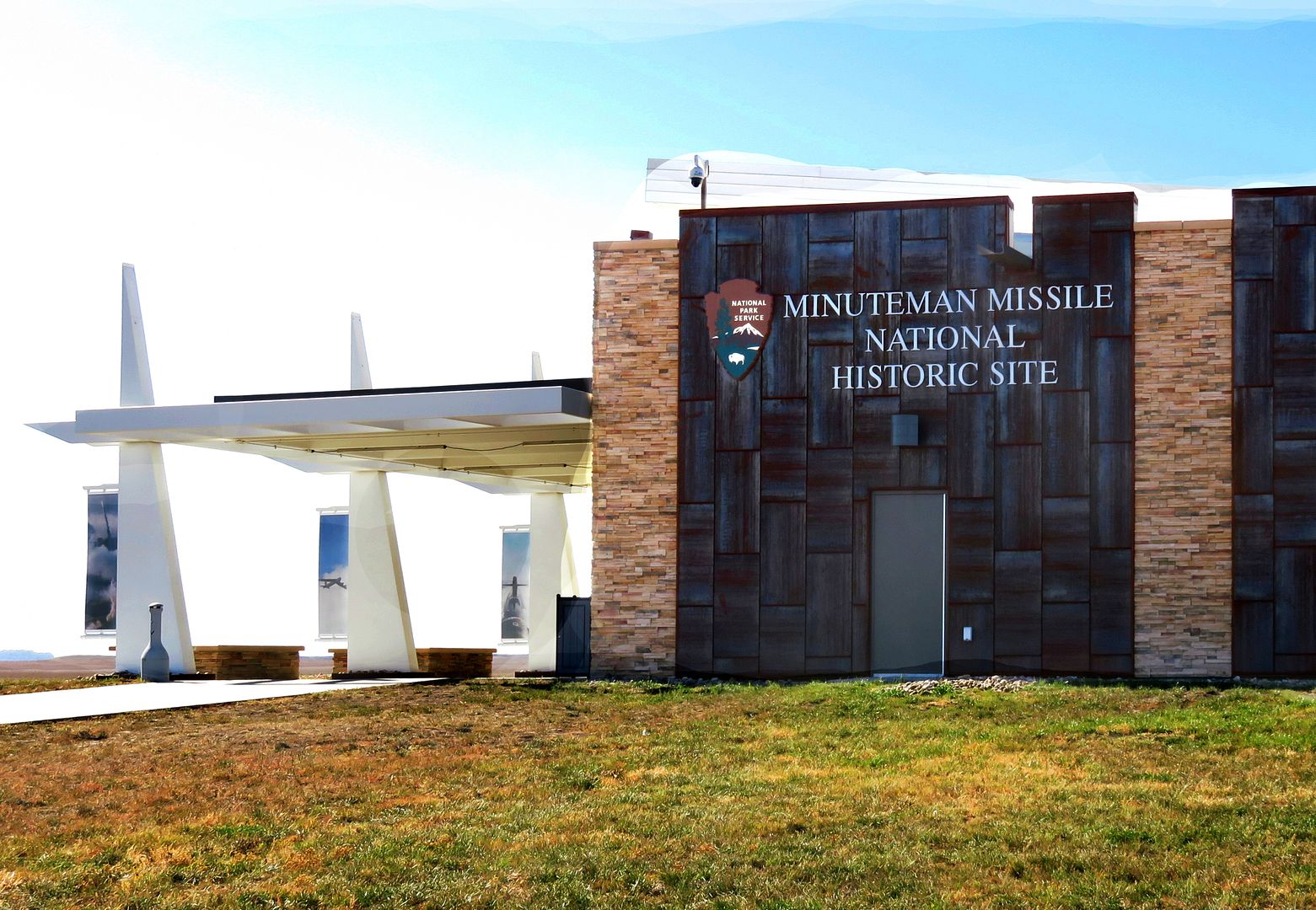
A very positive spin to the horrors of nuclear armaments…
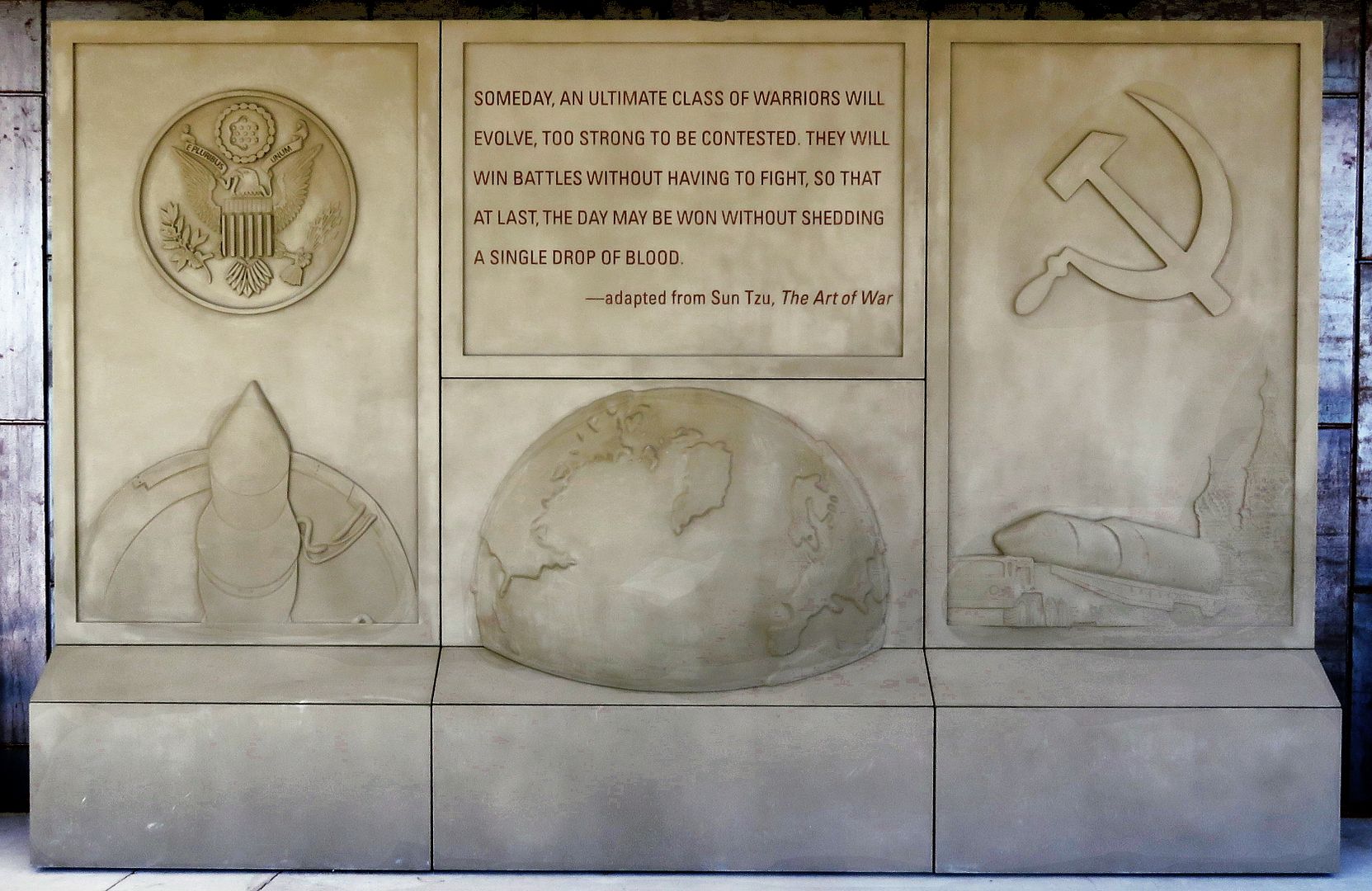
Some of the exhibits show the organized effort to convince the American public that they could survive a nuclear attack.
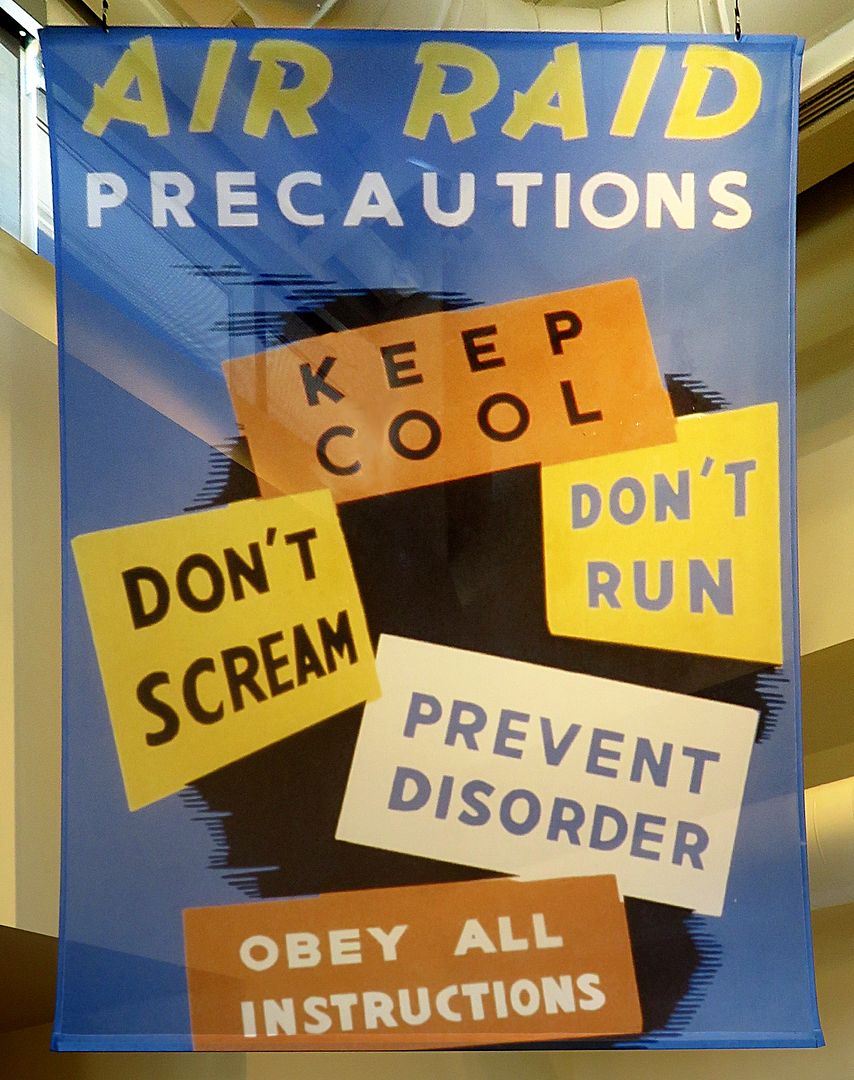
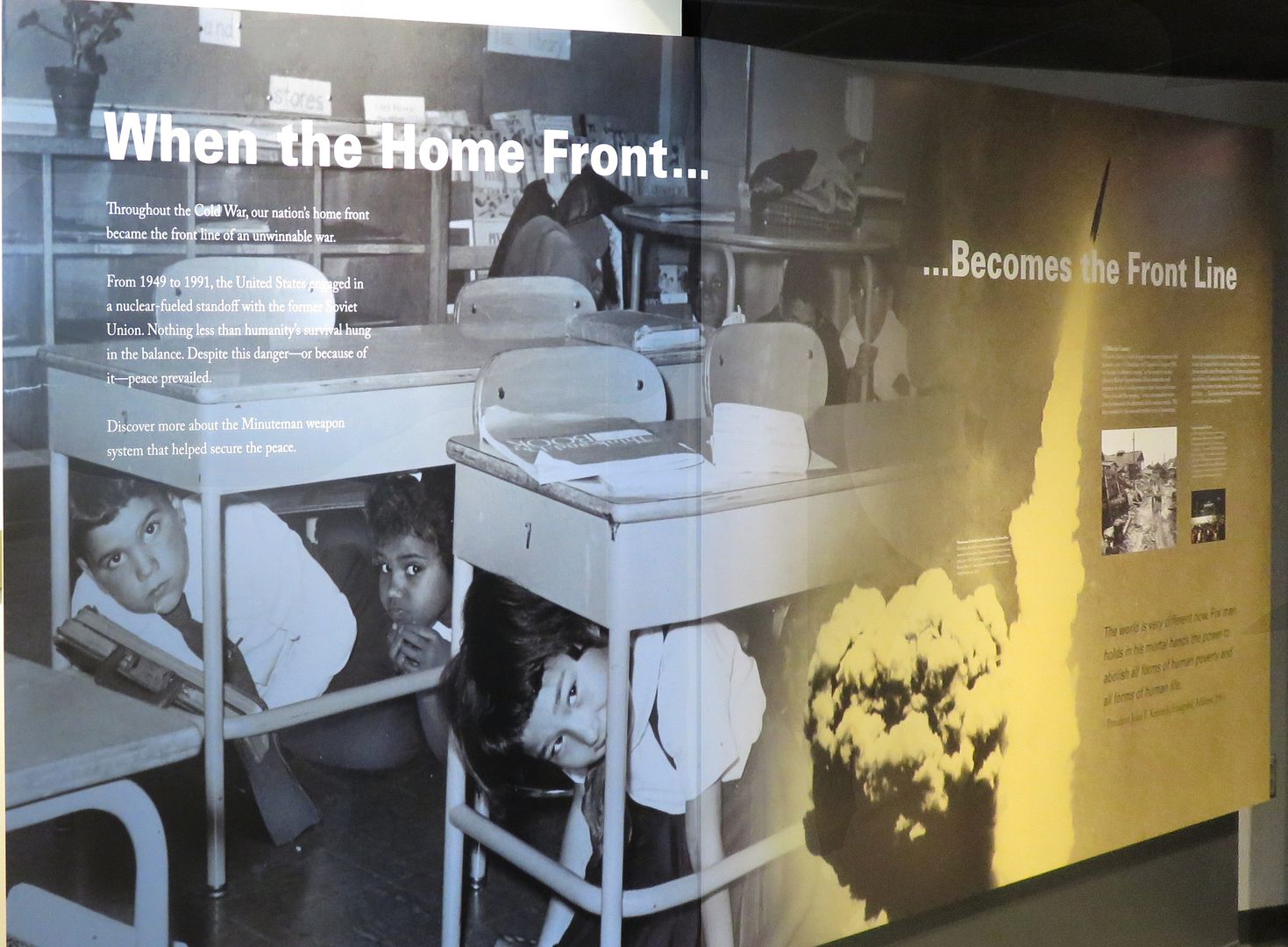

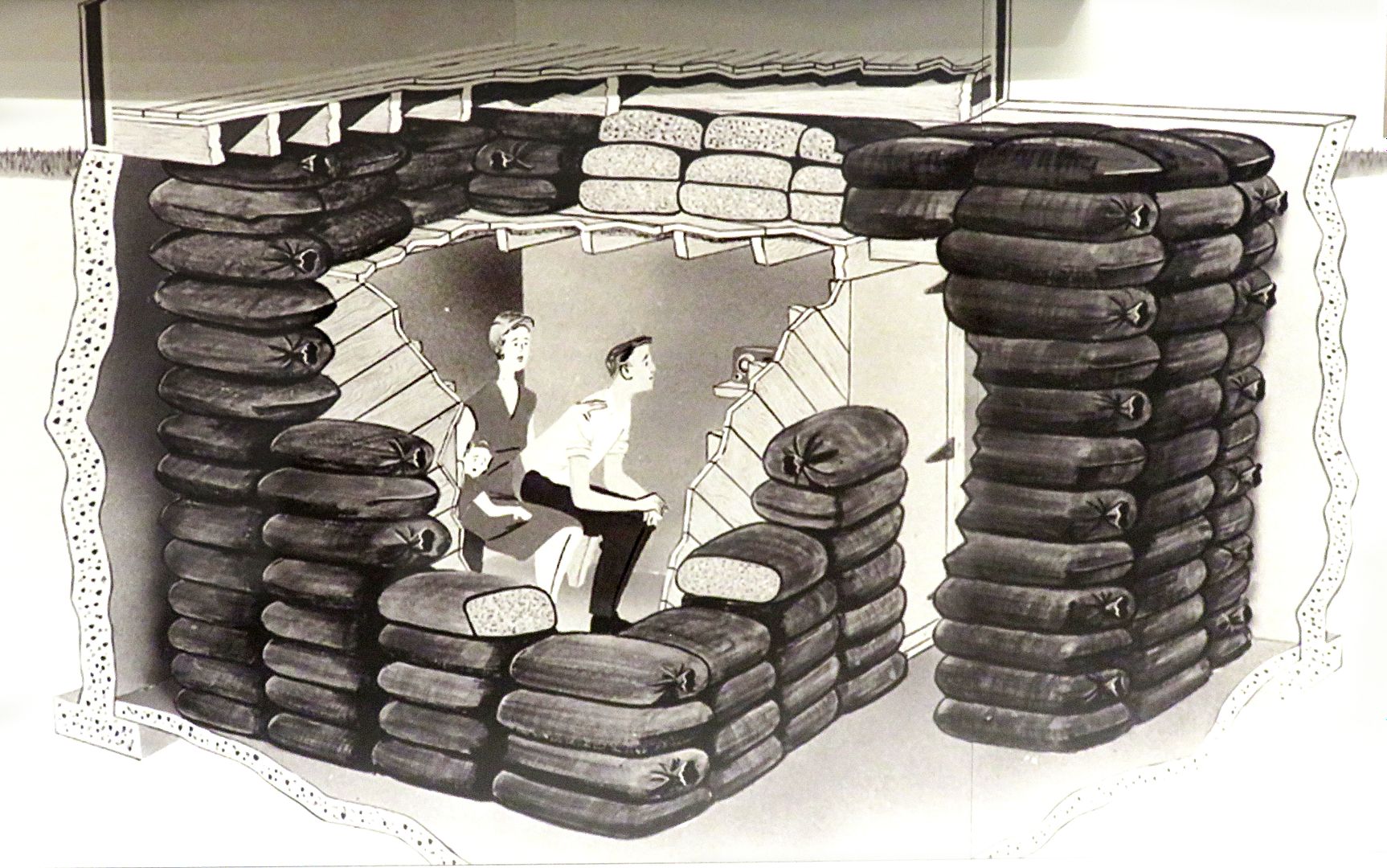
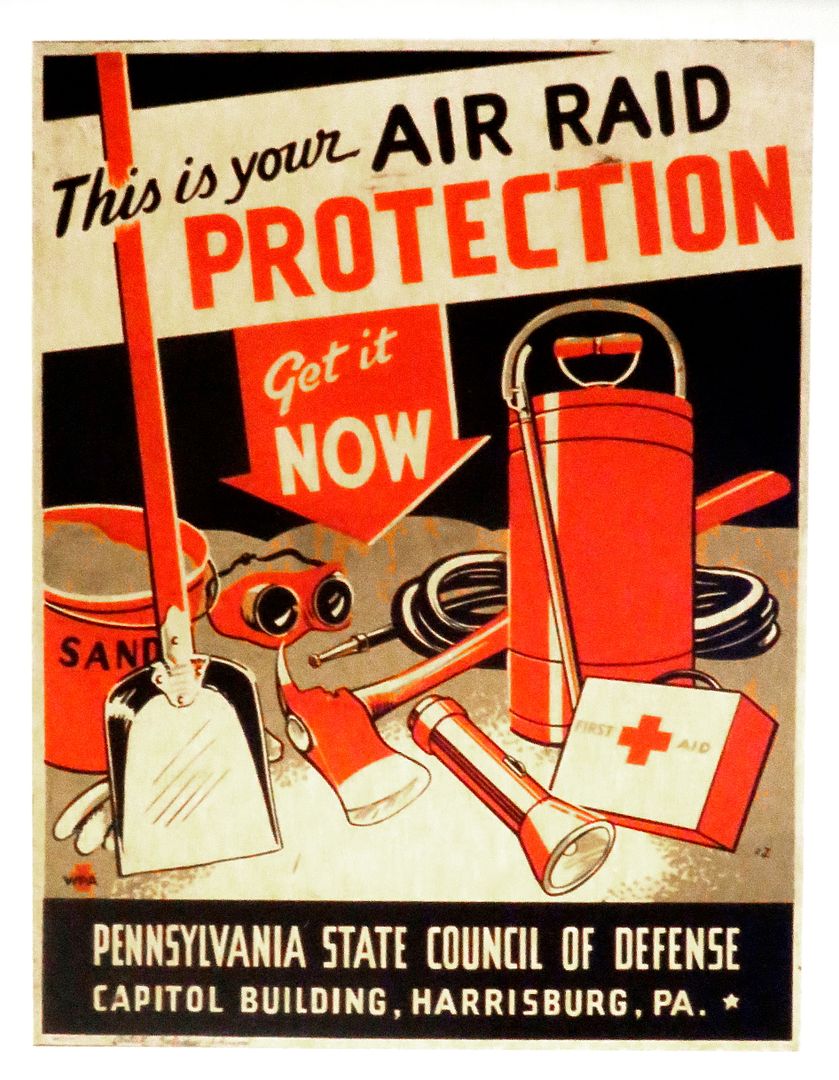
Many people don’t know that the Interstate highway system that knits the country together with high-speed ribbons of concrete was actually created primarily as a military defense system. General Eisenhower was impressed with the Autobahn system the Germans used to move military materials and personnel around quickly. As President, Eisenhower pushed for a great network of high speed highways. The public reason was to make transportation faster and easier for the citizens – but the real reason was to create a system that would allow rapid deployment of military defense.
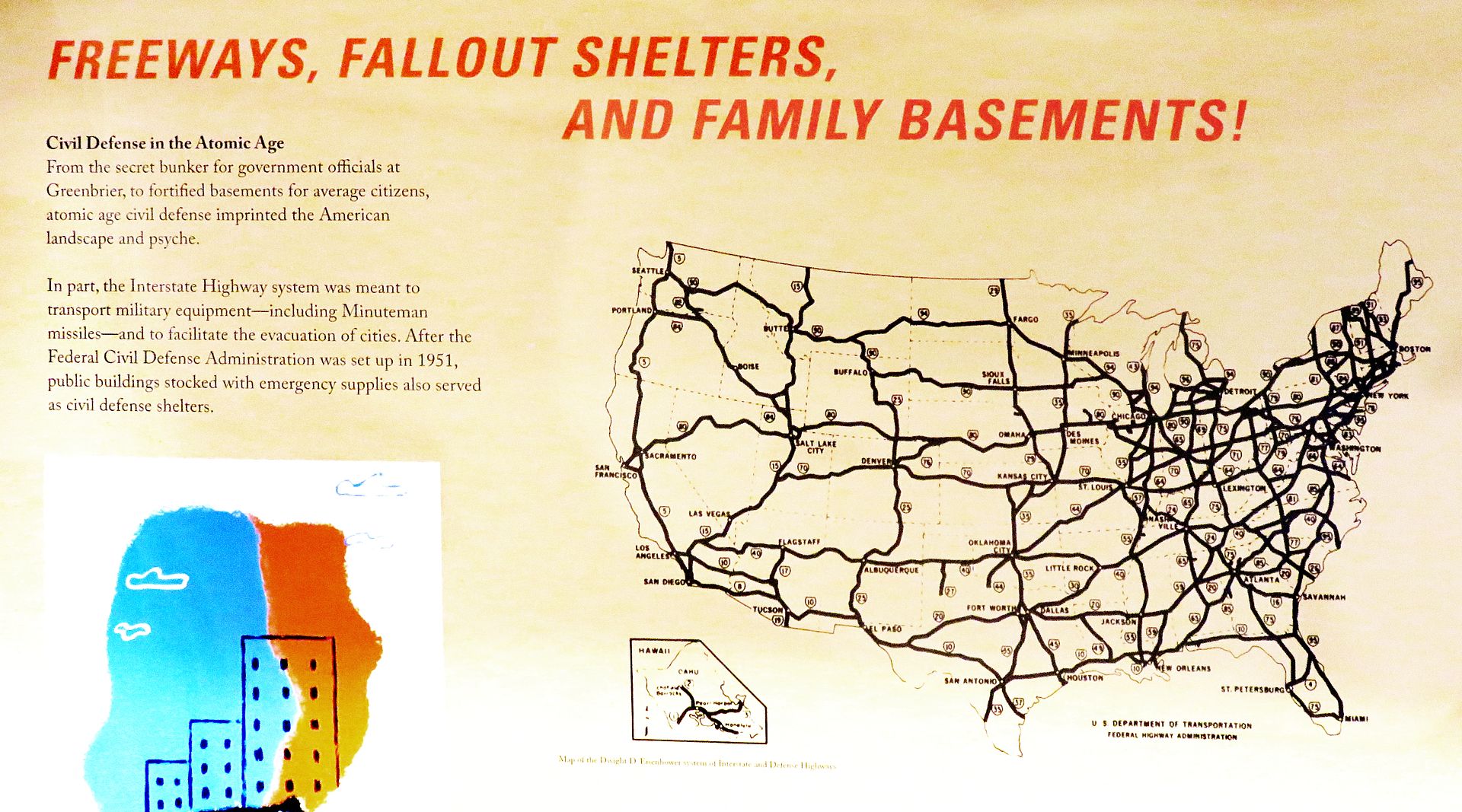
Americans were inundated with the message that the Russians were godless atheists who hated freedom and wanted to enslave everyone in the world. When Nikita Kruschev gave a forceful speech about the historical inevitability of the triumph of cooperative socialism over selfish capitalism, his words were translated as “We will bury you!” and used to justify even greater military buildup.
What Americans didn’t know was how similar the propaganda was in the Soviet countries. Their citizens were convinced that America and the European democracies were controlled by a small wealthy class with the rest of citizens living deluded lives of virtual slavery. They were convinced that the US would use its military might to conquer them as soon as it had an advantage. The museum has several examples of Soviet propaganda that strangely mirrors the messages Americans were getting.
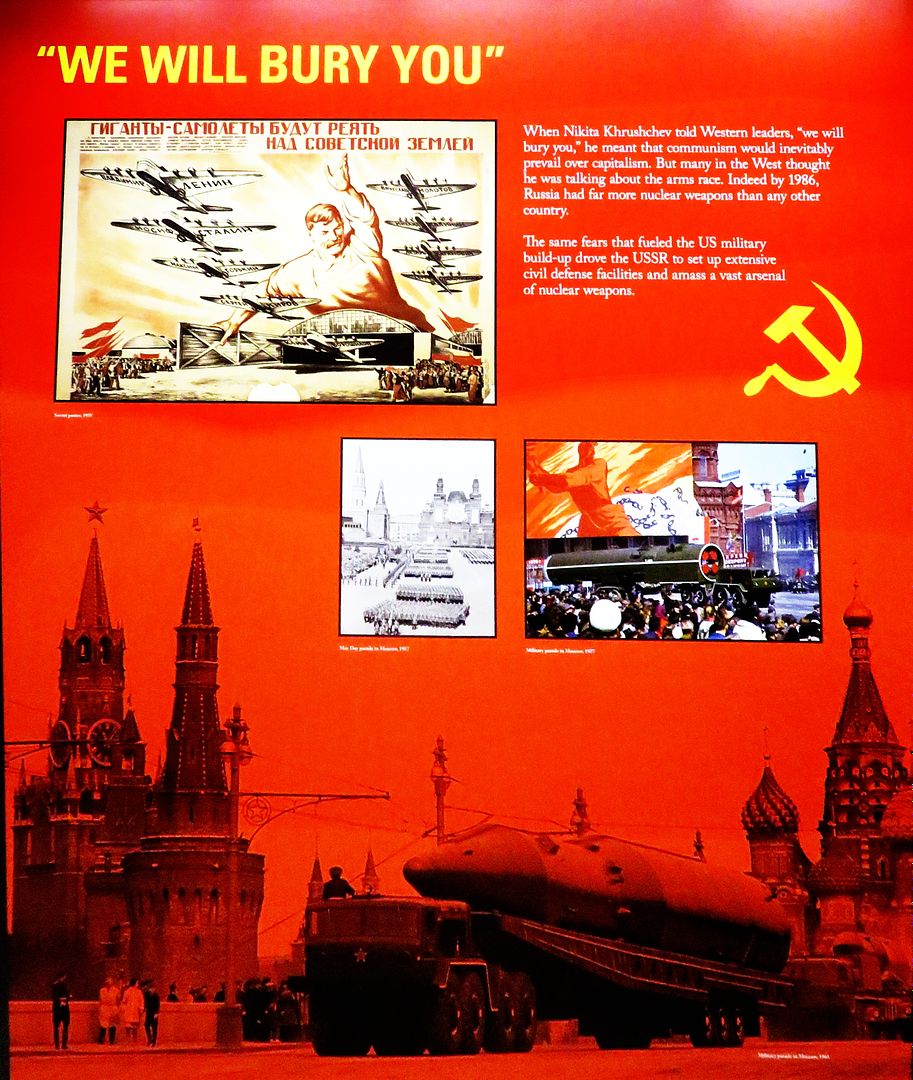

The shortest route for intercontinental ballistic missles (ICBMs) between Russia and the US was over the North Pole. Military facilities on the coasts were vulnerable to attack from ships and submarines, so the vast plains of America’s heartland became the obvious place to build missle silos. At one time over 1000 ICBMs were spread across the farms and ranches of the Central United States.
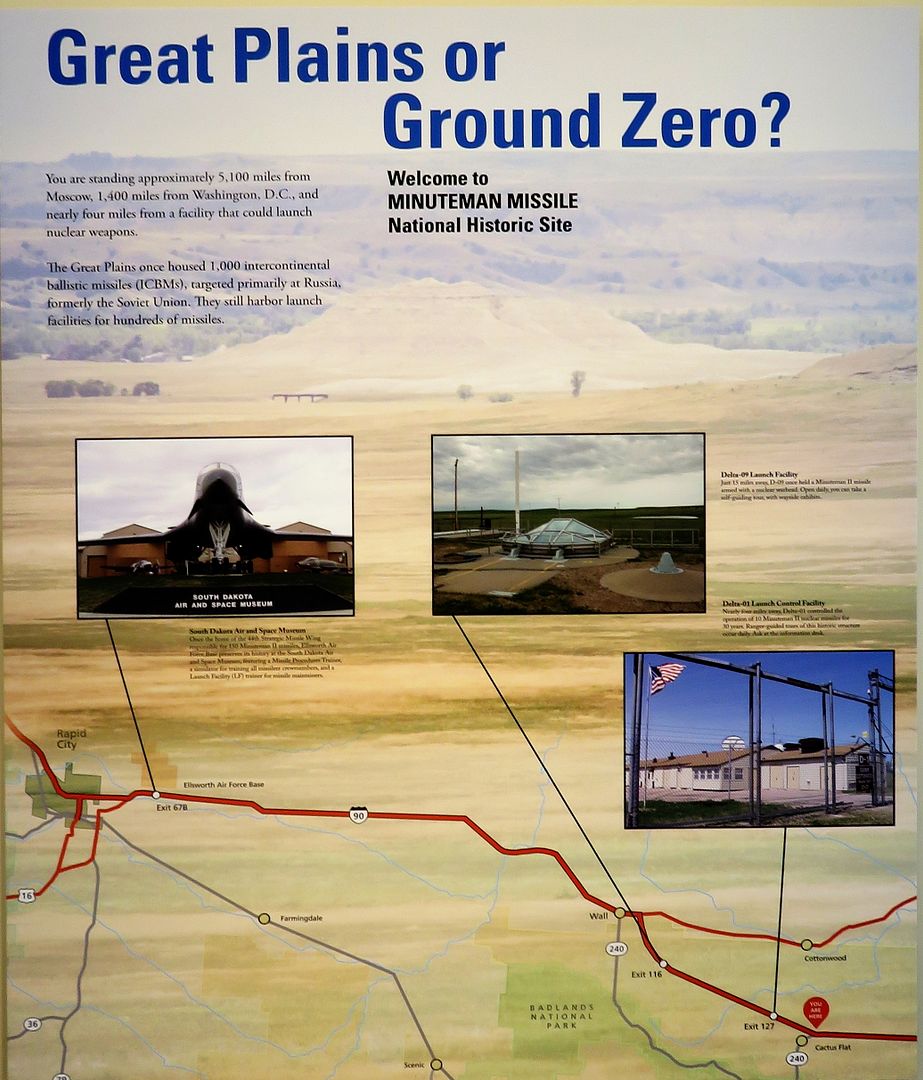
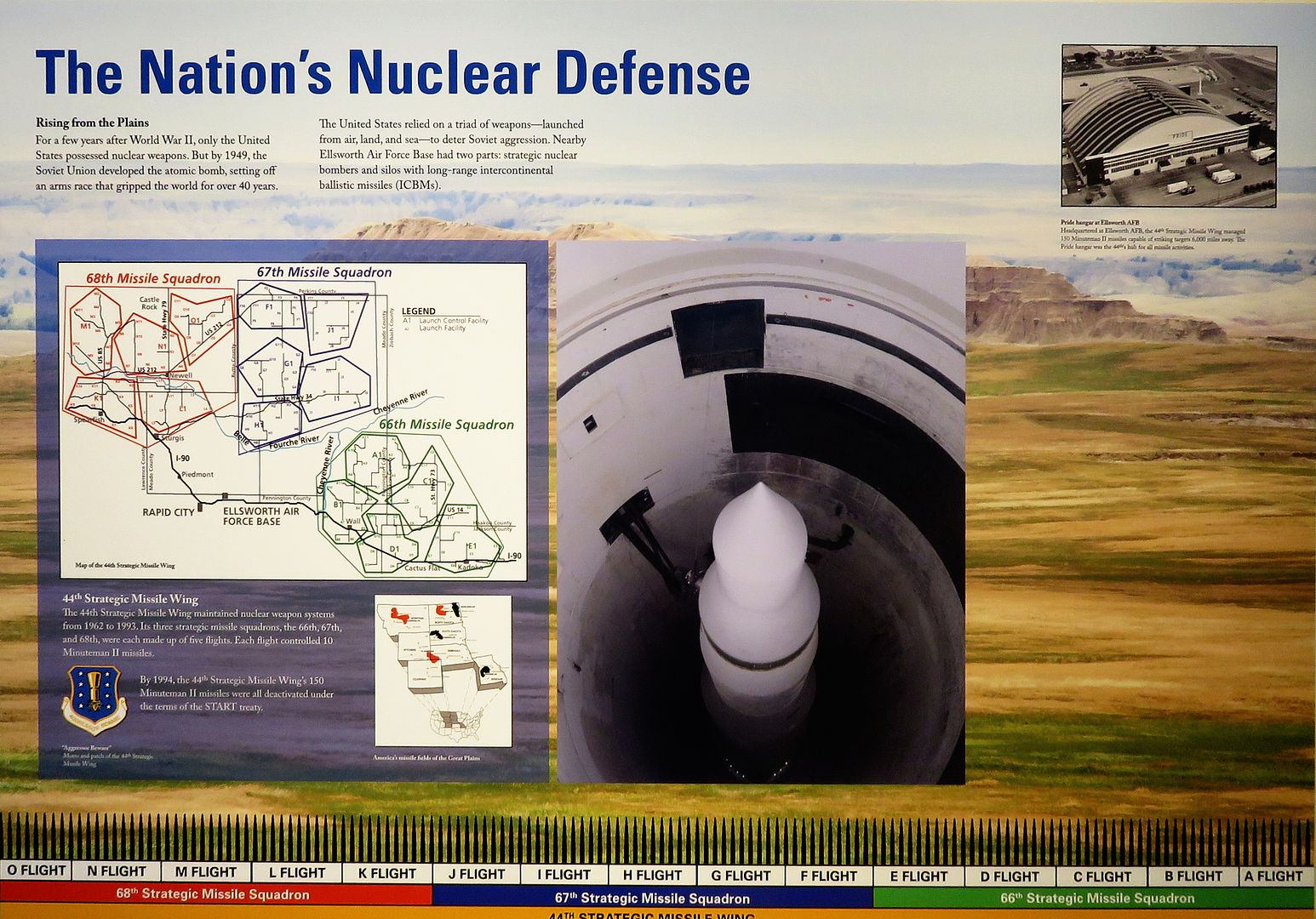
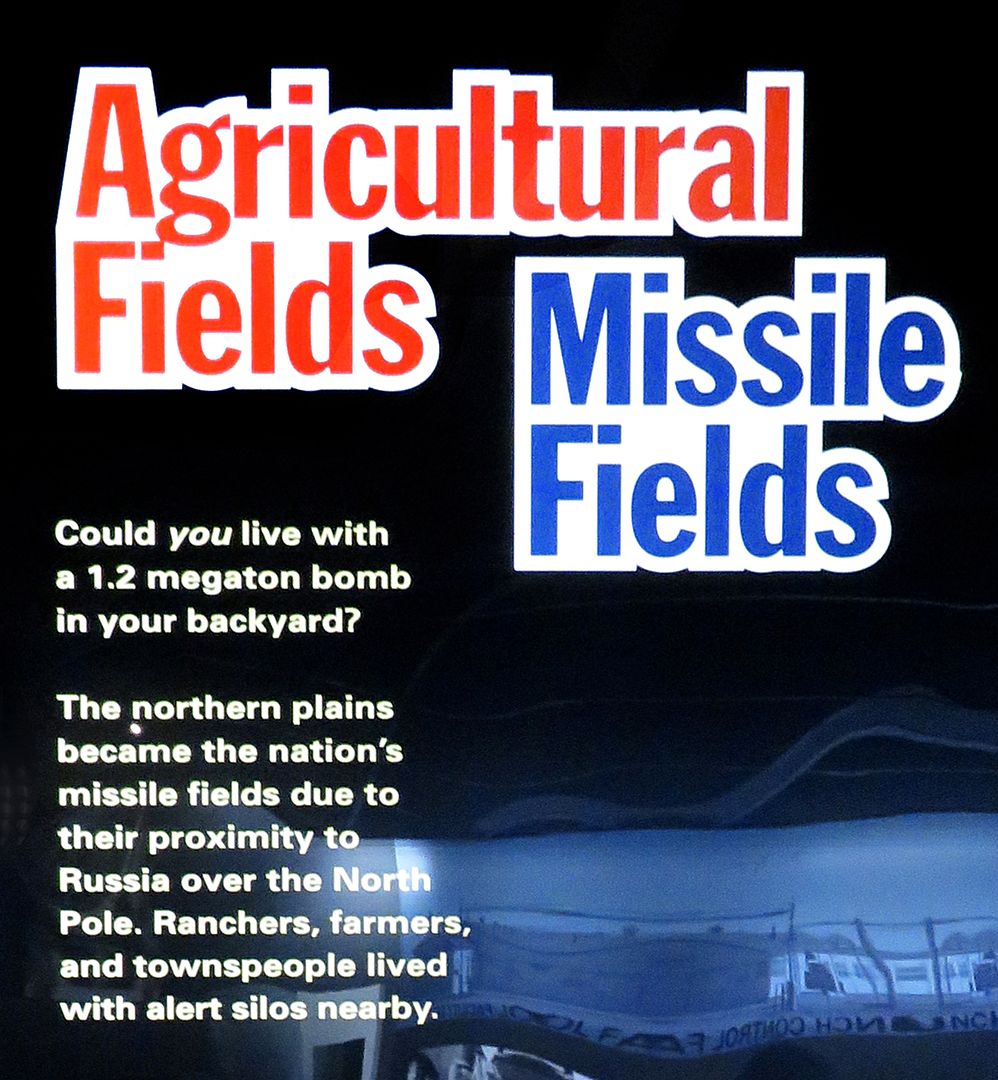

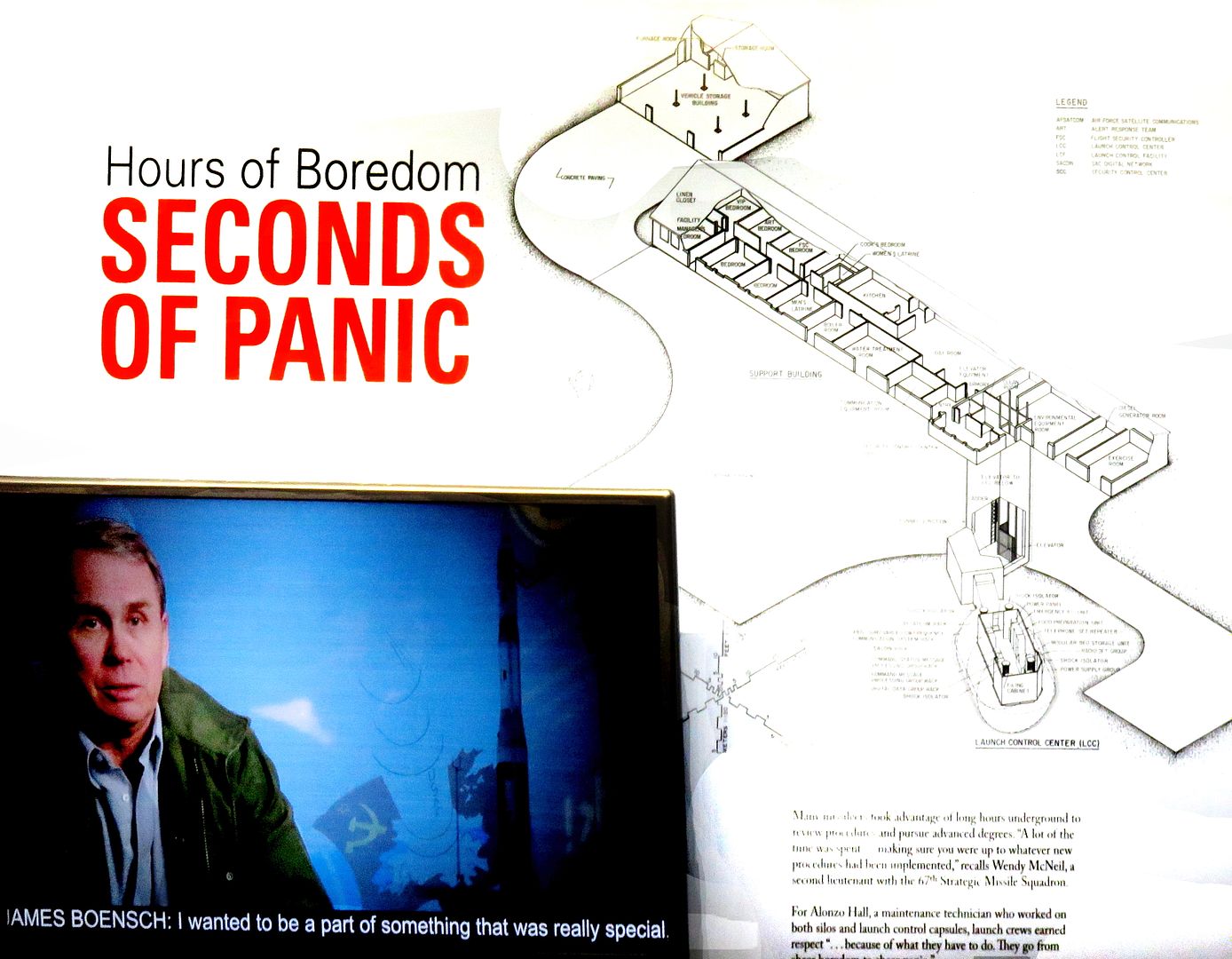
The soldiers who drew the difficult duty of maintaining the nuclear watch were always aware that they might be called upon to participate in the destruction of the world as we know it. Sometimes a very dark kind of humor emerged.
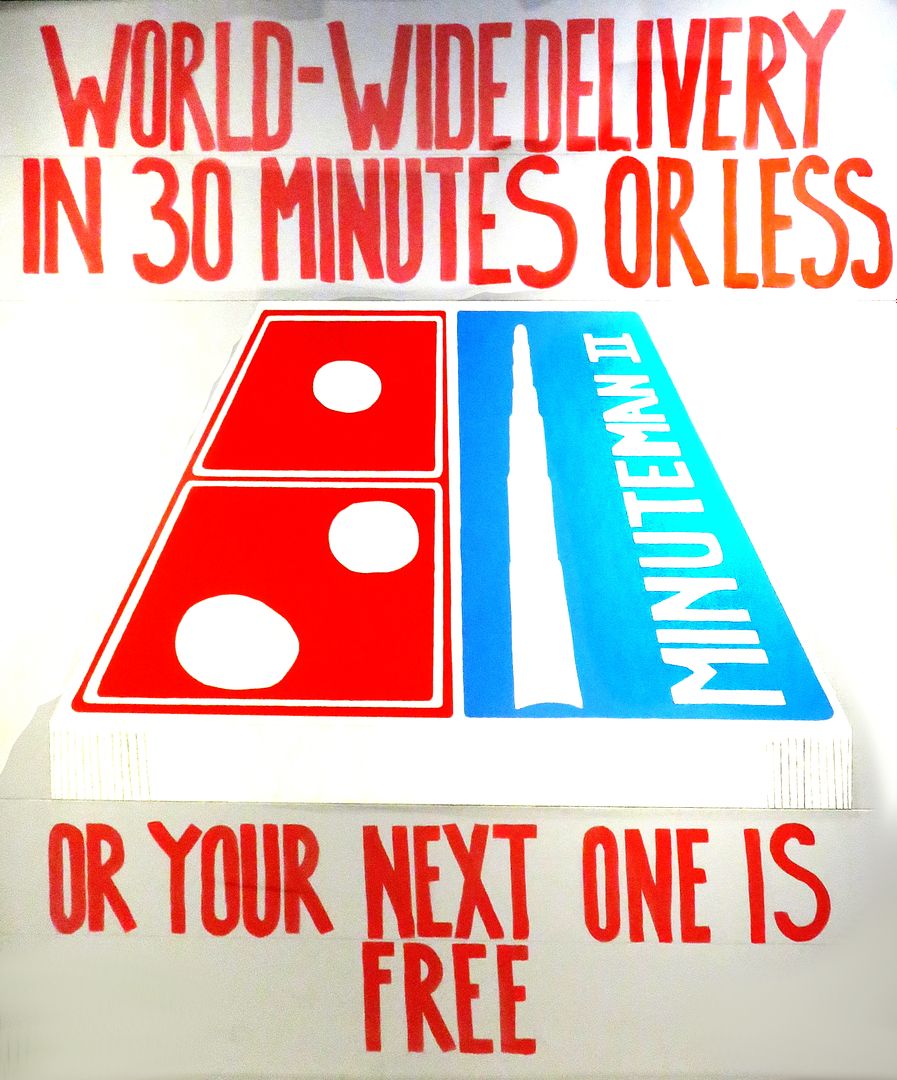
It is sobering to stand by one of the chairs that soldiers manned, bored with the inactivity but dreading orders that would require them to insert and turn the keys that would launch a catastrophic attack.
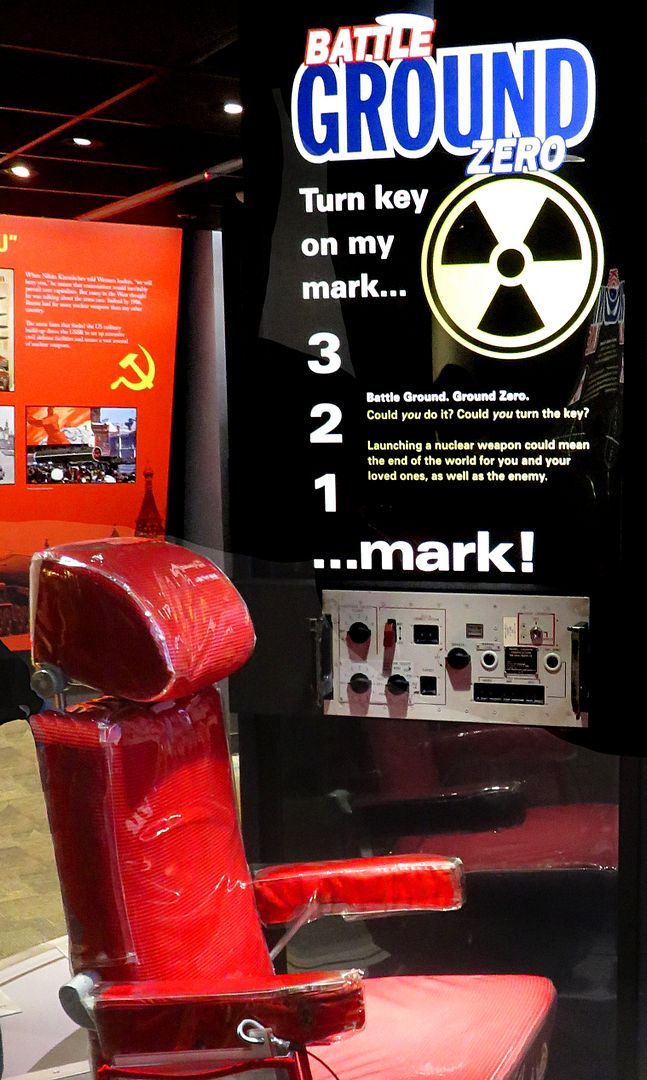
There is a great display that visually presents the tremendous buildup of nuclear weapons year by year. The blue cylinders represent the number of nuclear weapons in the arsenals of the Western countries. The dark orange cylinders represent the nuclear weapons controlled by the communist countries. The light orange bar graphs on the wall behind each year indicate the total numbers of both sides.
They start in 1945.., the cylinders in the foreground of the first photo. There were only a few nuclear weapons at the end of World War II. As the exhibit continues, it is obvious that the western countries rushed to create overwhelming numbers. Up until 1956 it is clear the “Free World” had many many more nuclear weapons. The argument in the West was that the Soviets had such a large standing army that the only way to off-set their superiority in numbers was with nuclear weapons. At the peak of this buildup, around 1966, the Western countries have something like five times as many “nukes” as the Soviets.
Somewhere around 1978 the numbers started to reverse. The number of Western nukes actually dropped, then stabilized for a long period of time. Though this might be considered a positive, in fact it represents the phasing out of older, less effective weapons. A smaller arsenal was needed due to the power and effectiveness of the newer weapons and “delivery systems.” On the other hand, the exhibit shows how the Soviets were drawn into the competition. From around 1980 there was a rapid buildup until they had approximately twice as many nukes as the West.
The exhibit is entitled “To the Brink and Back” because it also shows the negotiated reduction in the number of nuclear weapons. One can clearly see how both sides reduced their total numbers to a situation that is roughly in parity.
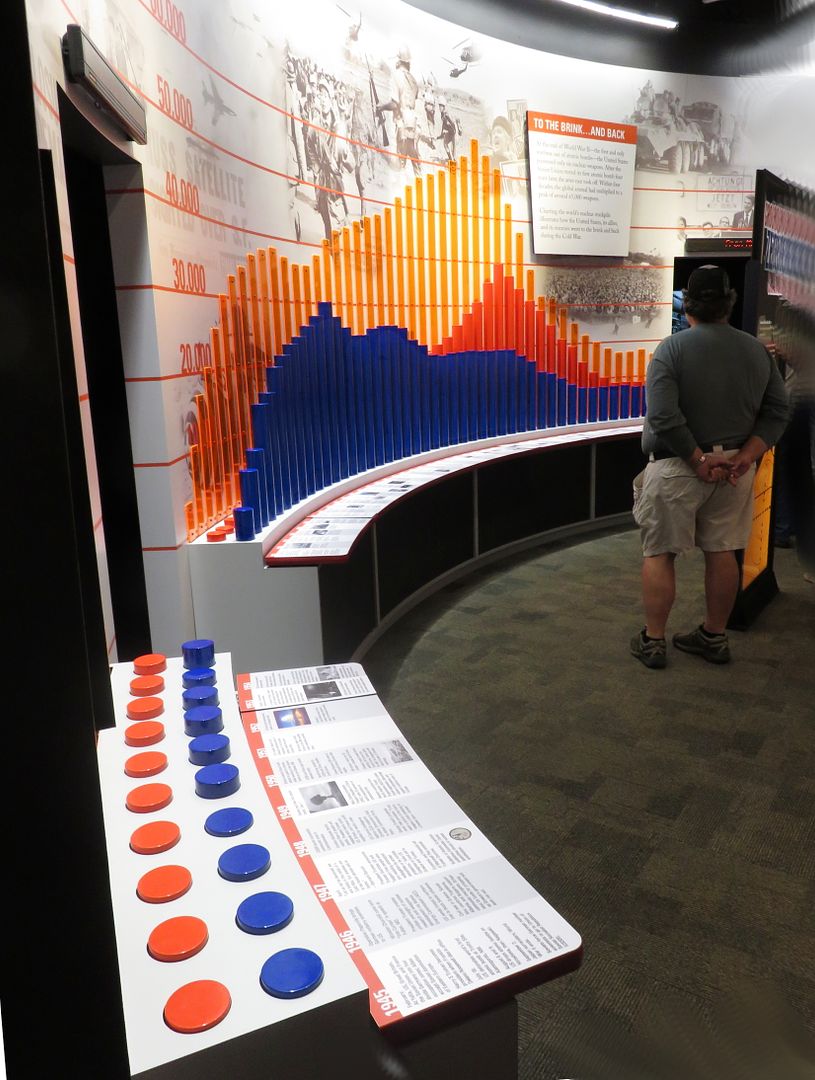

Why did both sides back away from the brink? Technology was a big part of it. When the West developed the devastating technology to allow a single missle to deliver multiple warheads, each capable of being targeted individually, the reality of a completely unstoppable rain of fire was driven home. The Soviets quickly developed similar technology. It became obvious that MAD – Mutually Assured Destruction – was a reality. Both sides realized that there was no particular advantage to continue to amass more and more weapons and be able to completely destroy one’s enemy three or five times over… once was quite enough.
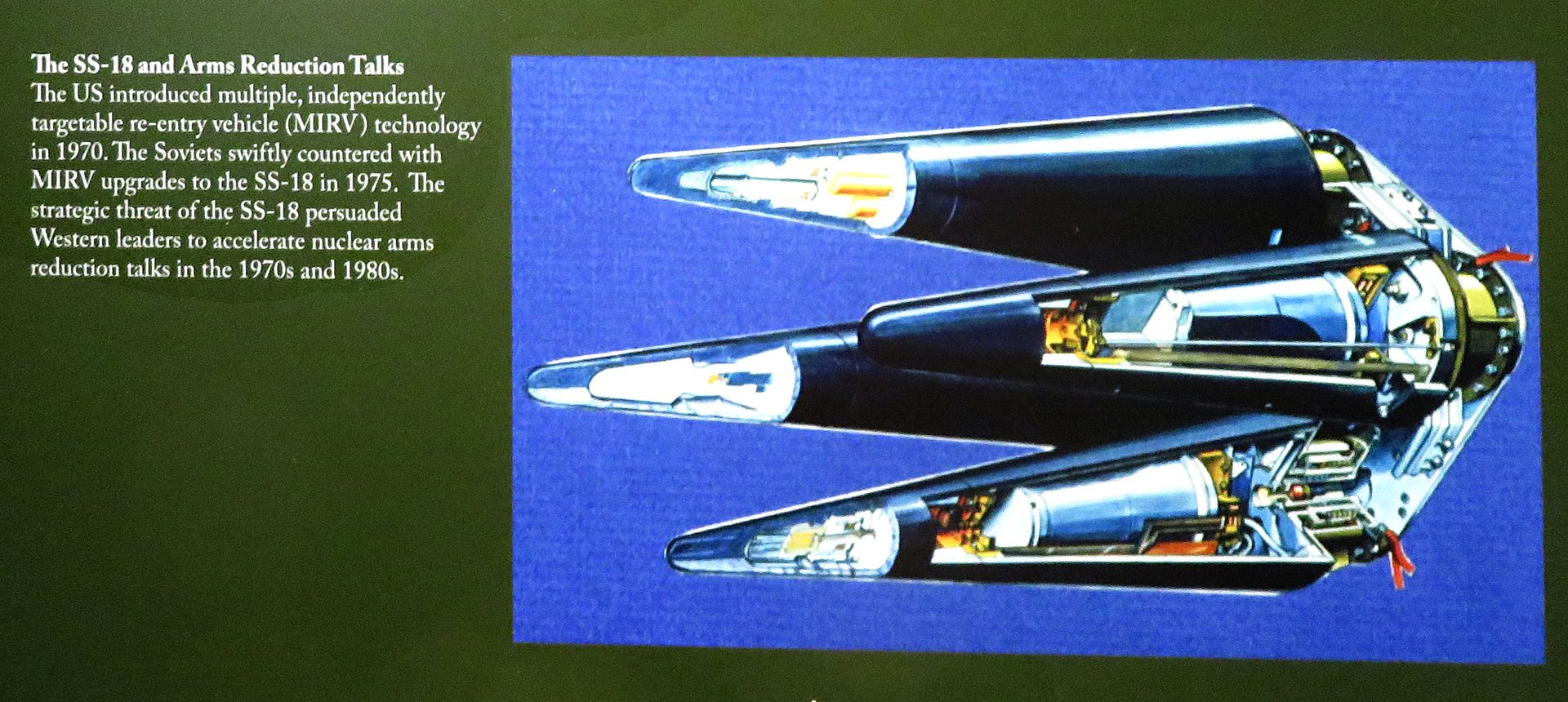
Perhaps the most sobering display is a small one… and since it is near the end of the tour many folks may miss it altogether. This display cites the many “end of the world” accidents and incidents that could have easily resulted in all-out nuclear warfare.
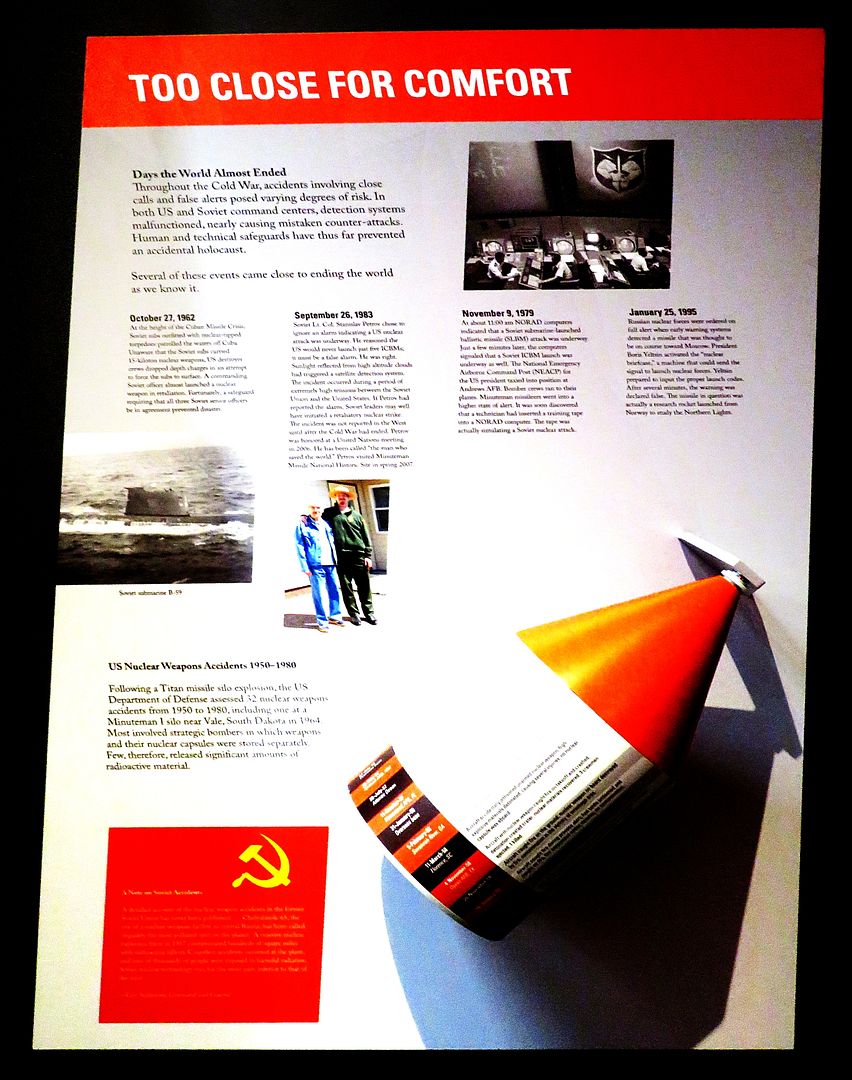
For example, Americans knew that the Cuban Missle Crisis in 1962 was a “close call” but it has only become known in recent years that the US Navy was dropping depth charges on Soviet submarines, unaware that the subs had nuclear torpedos. A sub commander ordered a nuclear response but Soviet Navy regulations required unanimous agreement among senior officers and the launch was scuttled.
Or the time in 1979 when the Norad computers said the Soviets had launched ICBMs and a counter-attack was prepared, stopped only by a commanding officer who decided the information didn’t make sense. Turns out a technician had accidentally put a training tape into the computers – a tape simulating a Soviet attack.
Reading the list of “close calls” and the more than 30 nuclear weapon accidents in the US alone… is frightening.
Eventually, treaties were negotiated to reduce the number of nuclear weapons on both sides and to stop weapons testing. In 1994, the last Minuteman missle silo wad decommissioned.
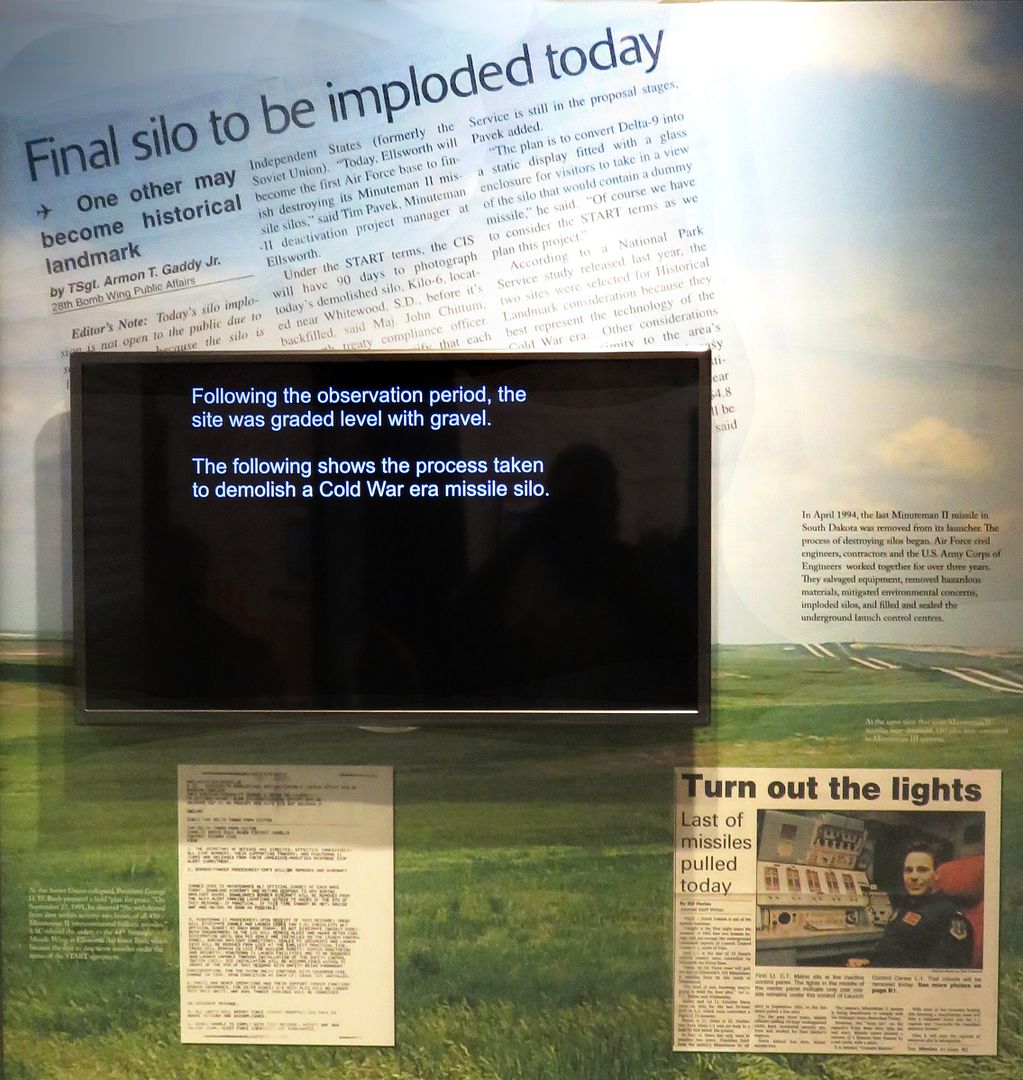
It is tempting to say "Thank goodness that is all over!"
Unfortunately, it is not true. Today the Russians still have enough nuclear capacity to end the world… and so do the Americans and their allies. But the list of countries with nuclear bombs has expanded – and they aren’t countries known for political stability.
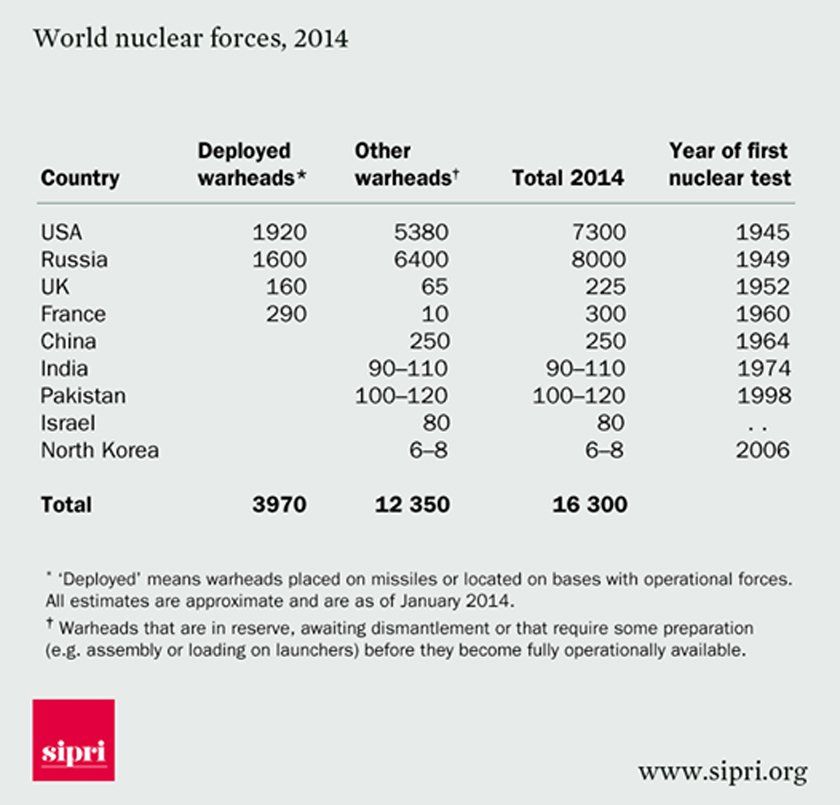
So humanity remains on the brink, relying on sane folks to refrain from using technology while living in an insane world. In 1964 we laughed at a cynical, darkly humorous movie entitled “Dr. Strangelove or: How I Learned to Stop Worrying and Love the Bomb”. The title was intended to be funny – but it actually describes how we have learned to live.
Einstein’s words remain eerily true… civilization as we know it will not survive a nuclear war. Any time we hear someone in authority using the phrase “bomb them back into the Stone Age” we should remember that it isn’t a metaphor. And with nuclear weapons, that taunt from Kindergarten suddenly becomes a grim prediction: “I’m rubber, you’re glue… it bounces off me and sticks to YOU!”